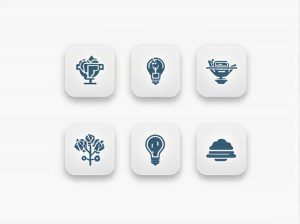The word “tillable” is commonly used in agriculture and land management. It refers to land that is suitable for tilling which means preparing the soil for planting crops. Farmers and landowners often use this term when discussing soil quality and farming potential.
Understanding tillable land is essential for those involved in agriculture gardening and real estate. This topic explores the definition of tillable its importance characteristics examples and common misconceptions.
Definition of Tillable
Tillable is an adjective that describes land that can be plowed cultivated or prepared for growing crops. It is derived from the verb “till” which means to work the soil by turning it over to improve its fertility and structure.
Example Sentences:
- “The farmer purchased 100 acres of tillable land for wheat production.”
- “This field is not tillable because the soil is too rocky.”
Why is Tillable Land Important?
Tillable land is crucial for agriculture because it determines the ability to grow crops efficiently. Farmers and agricultural experts evaluate land based on its tillability before planting crops.
Key Benefits of Tillable Land:
- Supports Crop Growth – Fertile tillable soil allows plants to develop strong roots.
- Easier to Cultivate – Loose tillable soil is easier to plow making farming more efficient.
- Higher Yield Potential – Land that is tillable can produce more crops increasing food supply.
Characteristics of Tillable Land
Not all land is tillable. Some factors determine whether land can be effectively used for farming.
1. Soil Quality
- Rich in nutrients like nitrogen phosphorus and potassium.
- Good soil structure allowing for proper drainage and root growth.
2. Moisture Retention
- Should hold enough water for crops but not become waterlogged.
- Sandy or extremely dry soil may not be easily tillable.
3. Absence of Large Rocks and Obstacles
- Land with too many rocks tree roots or uneven terrain may not be tillable.
4. Proper Drainage
- Poorly drained soil can lead to waterlogging making it unsuitable for tilling.
Difference Between Tillable and Non-Tillable Land
| Tillable Land | Non-Tillable Land |
|---|---|
| Suitable for farming | Not suitable for farming |
| Contains fertile soil | May be rocky swampy or too dry |
| Can be plowed and cultivated | Difficult to prepare for crops |
| Examples: Farmland fields | Examples: Mountains forests deserts |
Common Misconceptions About Tillable Land
1. All Land is Tillable
False! Not all land can be cultivated. Some areas are too rocky dry or swampy for farming.
2. Tillable Land Stays Tillable Forever
Not Always. Land can lose its tillability due to soil erosion overuse or lack of proper maintenance.
3. Tillable Land is Always Fertile
Not necessarily. Some tillable land may require fertilizers or soil amendments to improve its fertility.
How to Improve Tillability of Land
If land is not tillable certain methods can help make it suitable for cultivation.
1. Soil Improvement
- Add organic matter like compost to improve soil structure.
- Use fertilizers to enhance nutrient content.
2. Removing Rocks and Debris
- Clear large rocks and tree roots to make plowing easier.
3. Proper Irrigation
- Install drainage systems to prevent waterlogging.
- Use irrigation methods to ensure soil moisture balance.
Uses of Tillable Land
Tillable land has several uses beyond traditional farming.
1. Crop Cultivation
- Growing grains vegetables and fruits.
2. Livestock Farming
- Some tillable land is used for growing animal feed.
3. Agricultural Research
- Scientists use tillable land to test new farming techniques and crops.
4. Real Estate and Investment
- Investors buy tillable land for agricultural businesses.
Examples of Tillable Land Around the World
1. The Great Plains (USA & Canada)
- Known for its vast fertile farmland.
2. The Nile Valley (Egypt)
- Rich tillable land due to seasonal flooding and nutrient deposits.
3. The Pampas (Argentina)
- A major agricultural region producing wheat and corn.
Tillable land is essential for farming and food production. It refers to land that can be plowed and cultivated for crops. Understanding its characteristics benefits and limitations can help farmers landowners and investors make better decisions about land use.
By maintaining soil health and using proper farming techniques tillable land can remain productive for generations.



